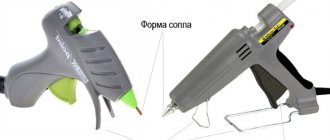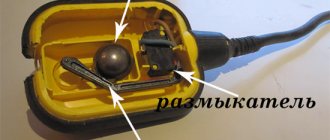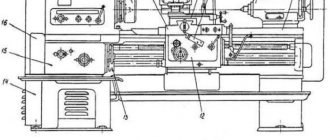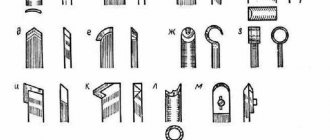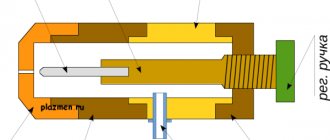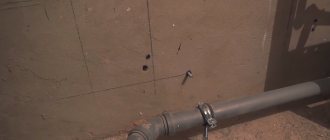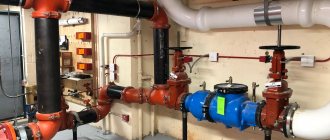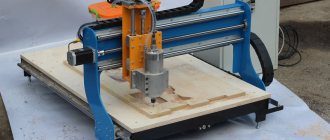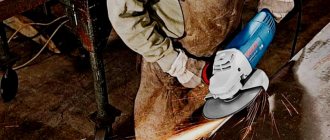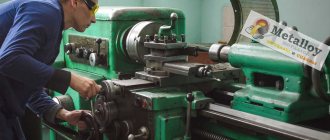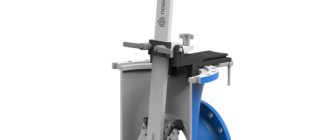What is metallography?
All metals have a micro- and macrostructure, which requires careful study carried out for different purposes. For example, such activities may be aimed at identifying the physicochemical, mechanical or electrical properties of a material or at determining the size, shape and arrangement of crystals. Using special equipment, you can easily determine the chemical composition of the metal, as well as the presence of various defects and foreign inclusions in it.
The work uses an electron microscope, the use of which implies the presence of samples prepared in advance for research. But there is another way, which consists in studying the fracture of the metal, which is greatly facilitated by the physical properties of the material, for example, opacity. In order to study the macrostructure of the sample in detail, it is necessary to prepare an appropriate thin section. That is, the product or part under study is cut, and this is done using a special machine.
Of course, you can cut metal with a gas torch, but then you will have to additionally process the surface under study, because due to heating by the flame, the structure of the metal changes, and the depth of this layer is approximately 1 cm. It is for this reason that the sample must undergo additional processing, and this requires grinding -polishing machine, which you can buy on the website. In order to determine the structure of the material, it is subject to etching, and from the results of this operation one can find out the structural components of the metal alloy.
Consumables for processing parts and workpieces
Examples of circle symbols
Consumables include grinding and polishing wheels intended for processing metal workpieces. In addition, a polishing machine cannot operate without the appropriate polishing pastes, so they should be included in the consumables.
It is noteworthy that the number of materials for polishing machines far exceeds the types of grinding wheels used. This is due to the fact that the working circle has certain dimensions, which may or may not correspond to the parameters of a given machine. Special pastes are applied directly to the wheel, so they can be used on any type of polishing machine.
How to choose the right equipment?
The machines for metallographic sample preparation of the sample under study, presented in the online store, are of high quality, have an ergonomic design and are endowed with the best performance characteristics. Grinding and polishing machines can be equipped with one or more discs, therefore, both coarse grinding and soft polishing are available to them. Hardware performance depends not only on the number of disks, but also on:
- The speed of their rotation. In most of the models presented, this is an adjustable parameter, and the choice of rotation speed depends not only on the type of material, but also on its thickness and density. There are models on sale with continuously variable speed control, and they are reliably protected from various types of overloads.
- Disc diameter. A manual grinding and polishing machine has a disk with a diameter of 200 mm, made of stainless steel, and a disk with a diameter of 250 mm is considered universal. To process a large number of samples or if they are large in size, it is appropriate to use three-hundred-millimeter disks.
Classification
A manual polishing machine is quite often used in everyday life. If for some reason it is not possible to buy one, then you can make a polishing machine with your own hands using a regular drill. To do this, you just need to clamp the felt disc into the chuck. But such a homemade metal polishing machine is not suitable for long-term operation.
There are also polishing angle grinders, which, unlike the well-known “grinder”, have adjustable speed. On such devices, the speed is significantly lower than on a conventional angle grinder. Thanks to this fact, the paintwork will not melt or deform. By replacing the polishing disc with a flap abrasive wheel, a manual sharpening and polishing machine can be used to process various products and workpieces. Using such a device, you can grind and polish the body, headlights, glass of a car, motorcycle, etc. at home.
Proxxon PM 100
Tabletop, but already stationary polishing and grinding machines, which some place in their garage, in a small private workshop should include an emery machine installed on a workbench or a special podium. In general, a tabletop polishing machine differs from a regular emery machine in that a different tool is installed on it.
For example, the JSSG-10 tabletop polishing machine is perfect for working at home. Thanks to its fairly rich functionality and low price, it compares favorably with its competitors. The Jet JSSG-10 v machine can be used to sharpen, straighten and fine-tune cutting tools.
You can also select polishing machines for wood and metal. But this distinction is very conditional, since the equipment itself is used the same, only the nozzle changes.
A belt polishing machine is typically used for processing flat surfaces (for example, bars, boards). For different types of wood and metal, different abrasive belts are used.
In the machine tool industry, there are polishing machines with laps (finishing machines), centrifugal and liquid ones.
Jewelry polishing machine
As for finishing machines, they are used for finishing fine grinding of the surfaces of parts and eliminating roughness left on them by previous tools.
The remaining 2 types of equipment are usually used when processing workpieces of complex shapes.
Centrifugal machines have a certain container that is filled with a special solution or abrasive powder. When the container rotates, this mixture also begins to move and polishes the workpiece.
In liquid polishing machines, the workpiece is placed in a chamber, and polishing occurs with a jet of special liquid, which is saturated with abrasive. The pressure of such liquid from the nozzle is up to 50 m/sec. During polishing, the nozzle itself moves along the workpiece.
Tasks of grinding and polishing machines
A polishing and grinding machine, the price of which depends on both the manufacturer and its functionality, can perform one or more operations. Naturally, complex-purpose models are most preferable. Due to its small size, basic operations can be carried out not only in laboratory conditions, but also directly on site. An example is the preparation of pipelines for operation.
Smart machines can perform both their main functions and additional ones. Thanks to the grinding and polishing machine, it is possible to determine the resistance of the test sample to abrasion. But still, the main tasks of this equipment are considered to be the removal of metal particles that can distort the research results, as well as giving the sample surface the desired appearance. In order for the machine to cope with its responsibilities and meet the expectations of controllers, it is necessary to choose the most suitable model, a wide range of which is presented on the website.
Generally accepted classification
Grinding and polishing equipment has a lot of design options. First of all, they distinguish:
- General purpose, used in normal capacity.
- Specialized devices designed to perform a specific type of work.
General purpose machines have the following varieties:
Decoding of grinding machine models
- Cylindrical grinders.
- Surface grinding.
- Internal grinding.
- Centerless grinding.
All of these options require additional equipment for the equipment, for example, a belt polishing machine can be created by installing an appropriate device that moves the abrasive belt and creates a flat grinding surface. The grain size of the belt determines the degree of processing, from coarse to fine grinding or finishing.
The most common polishing machine is a conventional type of equipment with an installed working wheel made of felt, felt or other soft material, which, paired with a special paste, is capable of processing any metal workpiece.
Metal Polishes
The technology of manual metal polishing requires the purchase of equipment (drills, grinders) and various attachments.
The main means for polishing metals mechanically are various pastes containing silicon, zirconium or titanium carbide, diamond chips, and chromium oxide. Solid pastes must be diluted with oil. The costs are high, since the process consists of several stages, each of which requires different attachments.
If a chemical or electrochemical method is used, large containers and acids for preparing solutions and special clothing are needed. Nitric, hydrochloric, sulfuric, phosphoric acid, glycerin, and benzyl alcohol are used. For a household, these are quite expensive purchases, so chemicals are used only in enterprises.
Description and properties of the polishing process
GOST 9.301-86 regulates the requirements for the quality of processing of metal products as a result of polishing work. There are no special instructions regarding the gloss of surfaces after grinding, however, after polishing various defects, grooves, scratches, burrs, corrosion, etc. should be excluded.
In a word, polishing activities are designed to give the product an attractive appearance and consumer qualities.
In production there is such a thing as “polishing class”. The level of surface roughness of a particular part is determined using special equipment (microscopes and profilographs) down to 1 micrometer (μm, 1 mm = 1000 μm). If metal grinding is carried out at home, then the depth of the unevenness is determined by eye.
There are 14 roughness classes, which are indicated in special drawings in accordance with GOST 2789-59.
Polishing classes and requirements for them are presented in the table below.
| Surface description | Roughness size (up to microns) | Polishing class | Mechanical processing method |
| Traces of processing are very noticeable | 320 | 1 | Planing, sharpening and milling |
| 160 | 2 | ||
| 80 | 3 | ||
| Traces of processing are very faintly visible | 40 | 4 | Soft abrasive, semi-finishing |
| 20 | 5 | ||
| 10 | 6 | ||
| Traces of processing are not visible at all | 6,3 | 7 | Fine flow, grinding |
| 3,2 | 8 | ||
| 1,3 | 9 | ||
| The surface of the metal product is perfectly smooth and has a characteristic mirror shine | 0,8 | 10 | Final polishing, soft polishing |
| 0,4 | 11 | ||
| 0,2 | 12 | ||
| 0,1 | 13 | ||
| 0,05 | 14 |
Metal polishing machines
All polishing machines are divided into 2 groups: with wheels and belts. Belts and wheels consist of abrasives; the selection takes into account the requirements for surface roughness after processing. The equipment is semi-automatic or automatic. Automatic machines can become part of lines used in mass production.
Any machine is equipped with a bed (platform) that does not change position during operation. An electric motor is mounted on the platform, driving the shaft. You can work with sharpening abrasives and wheels. The sharpening angle is adjusted manually or automatically. Some designs are equipped with a water tank necessary for cooling.
Machines available for processing raw materials (steel sheets, aluminum, brass, profiles) and finished products:
- ship fittings;
- plumbing equipment;
- metal cornices and railings;
- door handles, parts of candlesticks;
- bicycle parts;
- tables and chairs;
- mufflers for motorcycles and cars.
The power of industrial models is 700-950 W, they are connected to a 220 V network. The rotation speed is 90-150 rpm. The adjustment is made depending on the characteristics of the material being processed and the wheel format. At the first stages of processing, large circles are used, small circles are used for finishing. The package includes a cable and extension cord. During work, tools for measuring angles, stabilizers, and pastes may be required.
